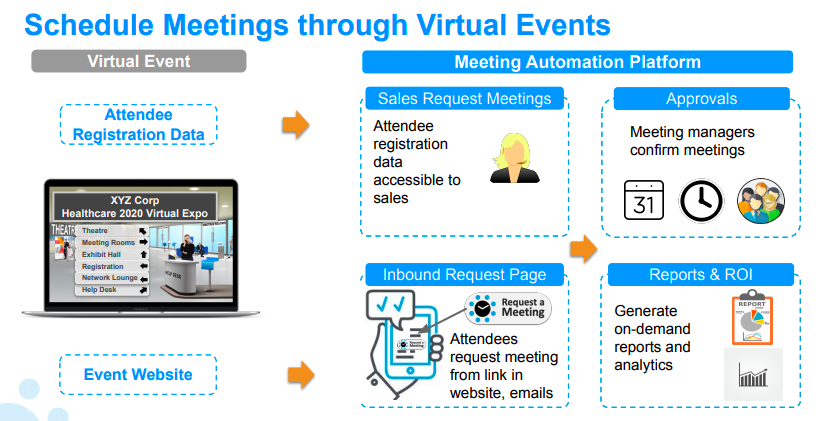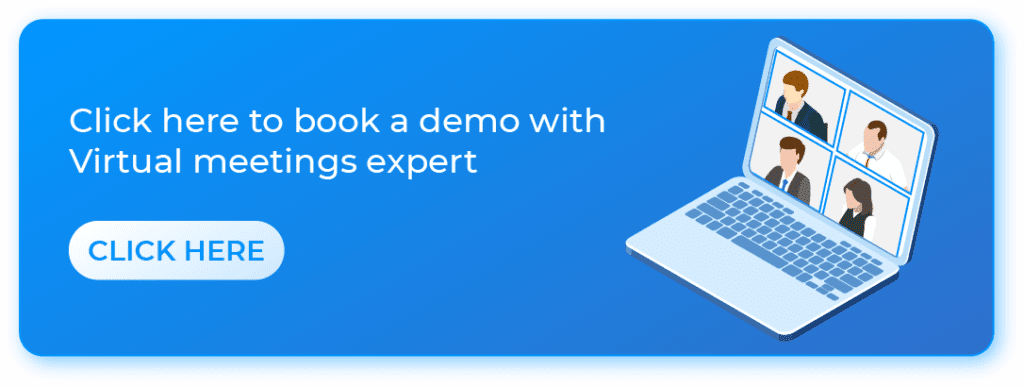We are currently in a transition phase from how business was done before the pandemic to how companies are trying to adapt to the new normal.
According to reports, 88% of in-person budgets have been cut. These budgets are either being slashed to weather the storm or, are being diverted to other avenues such as webinars, virtual events, social media, videos etc., to help mitigate the loss of pipeline and revenue that they are realizing from the cancelation of in-person events,.
The current crisis has made organizations realize just how important face-to-face engagements were. They are wondering how to accelerate sales velocity with attendees when they can’t do face-to-face meetings. Because ultimately the equation is: More Meetings -> More Pipeline -> More Revenue.
We already know that pipeline is the lead indicator of revenue. If you have to predict how much revenue you are going to produce, the best place to go is your pipeline. And the best way to influence pipeline is to have more meetings and engagements with customers, prospects, and partners. Marketing needs to focus not just on MQLs, but MQMs too.
So what are the creative channels these organizations are leveraging? Here are some ideas on how to mitigate the loss of pipeline and revenue associated with the cancelation of all in-person engagements. Let’s have a look:
5 Ways to Accelerate growth with B2B Meetings
1. Schedule meetings through virtual events: Virtual events are not just about driving more people to interact with your content, it’s also how the interactions at the event are converted to meetings. With the virtual event platform, we typically capture registration data. That registration data can be brought into a Meeting Automation platform and made available to the Sales teams. The Sales teams can then schedule outbound sales meetings with their prospects and customers to meet with their product experts, executives, and specialists to drive opportunities forward. We could also drive inbound meetings by letting attendees request meetings through inbound request pages.

2. Drive meetings through webinars: Webinars have become the most sort after avenue for companies in the current situation. We see companies holding hundreds of webinars to engage with prospects and customers per quarter. Webinars are not just about sharing content with your contacts, but also about converting those attendees into meetings. The best way to do that is to leverage inbound request pages and links in the webinar. Within the webinar, the inbound request links can be surfaced. Attendees can click on these links to request a meeting with your experts or executives. These links can also be a part of post webinar emails or surveys to convert attendees to conversation-ready leads.

3. ‘Meet the Expert’ programs: Meet the Expert (MTE) programs provide enterprise customers with the means to learn and understand details about products or services to make informed decisions throughout the year. While most companies have a pool of experts available by region and topic to assist partners/customers, the process (largely manual) of scheduling appointments lacks efficiency and impacts the productivity of internal and external attendees. Using a Meeting Automation platform, you can easily set up the program, and customers or prospects can book a meeting in a few simple steps rather than having to wait on a chat queue, make several phone calls, or send back and forth emails.
4. Drive MQMs from Demand Gen Campaigns: In our earlier blog, we discussed what MQMs are. The conventional Demand Gen channels can be leveraged to drive MQMs that drive pipeline and shorten the sales cycle. Demand Gen is traditionally a complex process that deals with several KPIs such as open rates, click rates, click through rates, price per click, etc. The way it works is, we get a plethora of content out there and generate enough engagement with that content, sending emails to keep the leads warm, calling them up, educating them etc., all in the hope that someday they will get excited about what we do and ask for a demo or want to engage with us.
What if the same conventional channels can be leveraged to drive meetings when the lead’s interest is piqued? Making a simple tweak to the content created, by adding a ‘Request a Meeting’ button so that a prospect/partner or customer can ask for a meeting right from a Google or Linkedin ad, an ebook, a whitepaper, landing page or banner ad the moment they want to engage with us, can make a lot of difference.
5. Virtual Sessions: Virtual sessions are a little different from webinars which are a one-to-many campaign where everyone gets the same experience and same content. A session or a track is Marketing’s ability to customize a prospect’s or customer’s experience based on their preferences There are many ways prospects or customers can attend a track or session. They can be nominated by a Sales Rep, following which they can be automatically invited to the session and a confirmation email sent out, or they could themselves register for a track or session.
Leveraging the above use cases has helped our customers mitigate the losses due to the lack of in-person engagements. Are you interested in these use cases and knowing how you can leverage them for your organization? Schedule a demo with us to know more.



